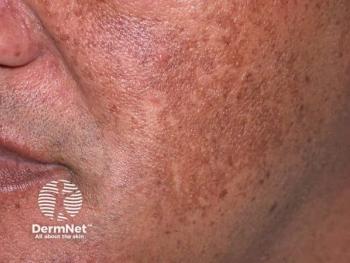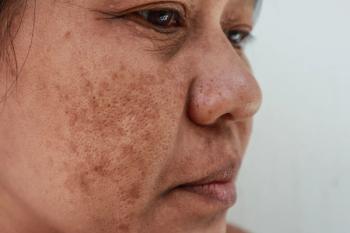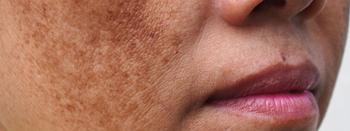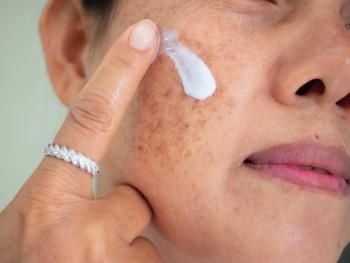
Melasma in the male patient
Men present with melasma too, but there are differentiating factors compared with female melasma patients. Researchers offer insights from a literature review for effectively treating the male melasma patient.
Melasma is a wide-spread skin condition that affects all races and genders. While it occurs more often in women than in men,
Researchers conducted a PubMed and Cochrane Library literature search using the keywords melasma, etiology and men, limiting the results to the past 20 years. There was the exception of including older publications necessary to describe the evolution of melasma in men. They excluded studies with poor design or conflicting results.
While the global prevalence of melasma is unknown, they found incidence varies by factors including ethnicity, skin type and sun exposure, confirming melasma is more common in people with Fitzpatrick skin types IV to VI and with Hispanic, Asian and African heritage.
For male melasma patients in particular, “It appears to affect dark-skinned men of Asian and African-American origin more frequently than previously thought,” they write.
Although melasma generally presents similarly in men and women, the authors note the malar clinical pattern for melasma is most common in men while the centrofacial pattern is more common in women.
Managing melasma in men requires medical treatment, the first-line treatment being topical therapy with triple combination cream.
“Monotherapies and dual therapies have lower efficacy, slower onset of action, and are recommended to patients unable to access triple therapy or who have sensitivity to the ingredients,” according to the authors.
Chemical peels are also a common component of melasma treatment, but authors caution the use of peels on melasma patients with darker skin because of post-inflammatory hyperpigmentation risk.
Finally, there’s the issue of treatment compliance.
Stereotypically, men are not as concerned with skin issues compared with women, nor are they typically compliant with complicated skin care regimens.
“However, clinicians should bear in mind that if a male patient is seeking treatment for a dermatological condition, such as melasma, then cosmesis might at least be of partial concern to him, and thus the patient might be very motivated to adhere to a prescribed treatment regime,” the authors write.
The authors note considering factors such as fragrance, moisture levels (oils), camouflaging ingredients, necessary steps and applications required.
The literature review also found that men report more sun exposure compared to female melasma patients (49% of men vs. 24% women). This data is important to be aware of when discussing options with male melasma patients who seek treatment.
Importantly, male melasma patients need to understand the necessity of wearing sun protection during treatment and to prevent future recurrence.
While sun exposure recommendations are necessary for both genders, “Physicians must be extra attentive to male patients, who have shown to be less successful in adhering to sunscreen application guidelines,” the authors write.
References:
Sarkar R, Ailawadi P, Garg S. Melasma in Men: A Review of Clinical, Etiological, and Management Issues. J Clin Aesthet Dermatol. 2018;11(2):53-59.
Newsletter
Like what you’re reading? Subscribe to Dermatology Times for weekly updates on therapies, innovations, and real-world practice tips.

















